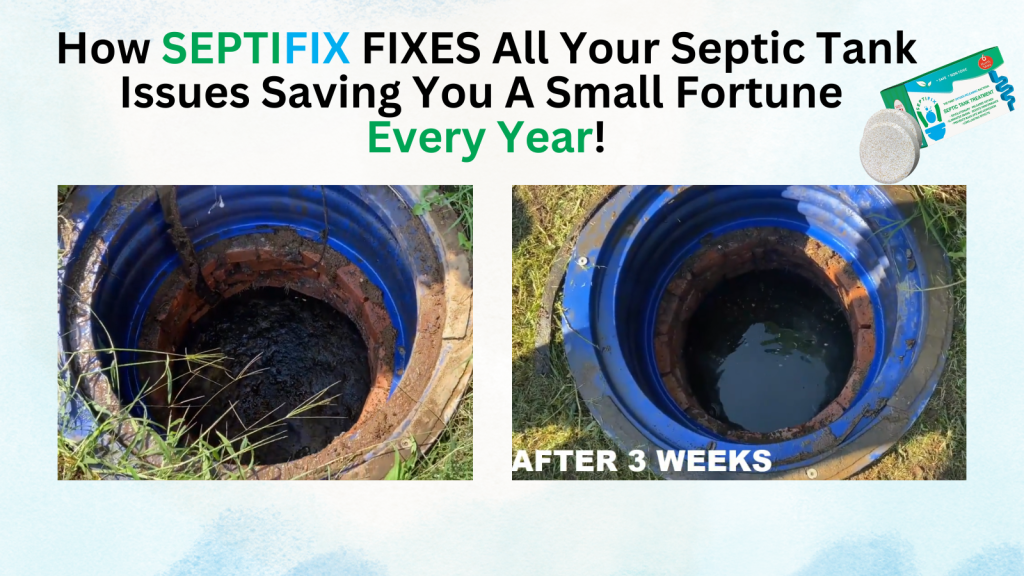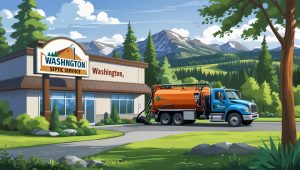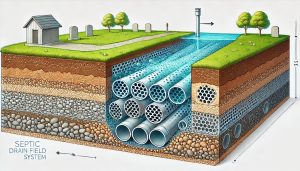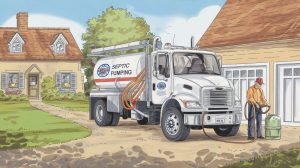Whether you live in rural Wisconsin or own a lakeside cabin, understanding Wisconsin septic system regulations is essential. These rules govern how private onsite wastewater treatment systems (POWTS)—commonly called septic systems—are installed, maintained, and inspected. If you ignore them, you risk costly fines, system failures, and environmental damage.
In this guide, we’ll walk you through the key requirements, what they mean for your property, and when to call in a professional.
Table of Content
- Understanding the Basics of Septic Systems in Wisconsin
- Key Wisconsin Septic System Regulations
- Alternative and Mound Systems in Wisconsin
- Local Variations and County-Specific Rules
- Contact Info and Resources
- Septifix Power for Your Septic System
- Septic Permit Links by State
Understanding the Basics of Septic Systems in Wisconsin
What Is a POWTS?
In Wisconsin, the official term for a septic system is Private Onsite Wastewater Treatment System (POWTS). These systems treat and dispose of wastewater from homes that don’t connect to municipal sewer systems. A standard POWTS includes a septic tank, a distribution system, and a soil absorption area (also called a drainfield or leach field).
Regional synonyms: In different areas, people may refer to these as on-lot systems, private sewage systems, or rural wastewater setups.
Key Wisconsin Septic System Regulations
Soil and Site Evaluation
Before installing a POWTS, you must schedule a soil and site evaluation with a certified soil tester. This test checks the soil’s ability to absorb and treat wastewater safely.
- You’ll need to file the results with your local county sanitary office.
- The soil tester will dig test pits to analyze the layers, texture, and depth to the water table.
Tip: If your soil doesn’t pass, you might need to install a specialized system, such as a mound system.
State Plumbing Code Requirements
All septic systems in Wisconsin must follow the Wisconsin Administrative Code SPS 383, which outlines how systems must be designed, built, and maintained.
- A licensed professional—typically a master plumber or certified designer—must create your system’s plan.
- The system must meet setback requirements listed in SPS 383.44, including minimum distances from wells, property lines, and water bodies.
You can review SPS 383 here for full legal context.
Permits and Approvals
Before beginning any work, you’ll need to obtain a sanitary permit from your county. This permit package includes your soil test, system plans, and design details.
- The zoning or environmental health office in your county will review and issue the permit.
- Some counties also require extra permits for mound systems or holding tanks.
Important: If you skip this step and build without a permit, the county can issue fines or even force you to remove the system.
Inspections and Installation
During and after installation, a state-certified POWTS inspector must inspect your system to make sure everything follows the approved plans.
- The inspector will check components before backfilling and confirm everything meets state requirements.
- You can’t begin using the system until it passes the final inspection and gets approval.
If your system doesn’t pass inspection, you’ll need to make corrections before continuing work. often means halting work until corrections are made. Don’t skip this step—it’s not just a formality.
Maintenance and Pumping Requirements
Proper maintenance isn’t just smart—it’s legally required.
Under Wis. Admin. Code SPS 383.54, the owner of a POWTS must:
- Have the septic tank pumped at least once every three years unless it qualifies for a longer interval based on system type and usage.
- Submit proof of pumping or inspection to the local health department.
Neglecting maintenance can lead to failing systems, groundwater pollution, and even mandatory upgrades.
Alternative and Mound Systems in Wisconsin
In areas with high groundwater or poor soil, mound systems or aerobic treatment units (ATUs) may be required.
- These systems are regulated under the same SPS 383 code, but have additional design and inspection requirements.
- Mound systems, for example, require more frequent maintenance and specialized pumping services.
If you’re unsure about your property’s suitability, consult with a licensed septic system designer or your county’s environmental health department.
Local Variations and County-Specific Rules
While SPS 383 governs the whole state, individual counties can add stricter regulations or specific requirements.
For example:
- Dane County requires more frequent inspections for holding tanks.
- Door County mandates advanced treatment systems near the shoreline to protect water quality.
- Waukesha County has a digital portal for homeowners to track inspections and maintenance records.
Always check with your county zoning office or land conservation department for localized requirements.
Contact Info and Resources
Whether you’re installing, repairing, or just learning, these resources can help you navigate Wisconsin septic system rules:
- Wisconsin DSPS – POWTS Code & Licensing
https://dsps.wi.gov - Wisconsin DNR – Septic Systems Near Water
https://dnr.wisconsin.gov - County Zoning and Sanitation Offices
(Look up your specific county for contact info and permit applications) - Licensed Septic Professionals Directory
Ask your local sanitarian or visit https://www.wisconsin.gov - Maintenance Schedule Lookup (POWTS)
Available through your county’s online system or by contacting zoning officials directly
- Wisconsin DSPS POWTS Program: dsps.wi.gov/Pages/Programs/POWTS
- EPA Septic System Manual: EPA Wastewater Guide
- State of Wisconsin POWTS Code (SPS 383): View Full Code
Conclusion
Wisconsin septic system regulations are designed to protect your health, your property, and the environment. Whether you’re installing a new system, upgrading an old one, or just trying to stay in compliance, knowing the rules—especially SPS 383, soil testing requirements, and local permit guidelines—is essential.
Take action today: Schedule your next tank inspection, review your maintenance records, or contact your county zoning office if you’re planning work on your system. Staying ahead of regulations now can prevent major headaches—and costs—down the line.
Septifix Power for Your Septic System










